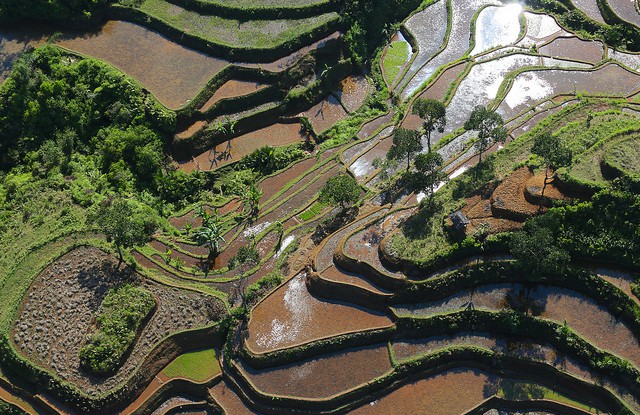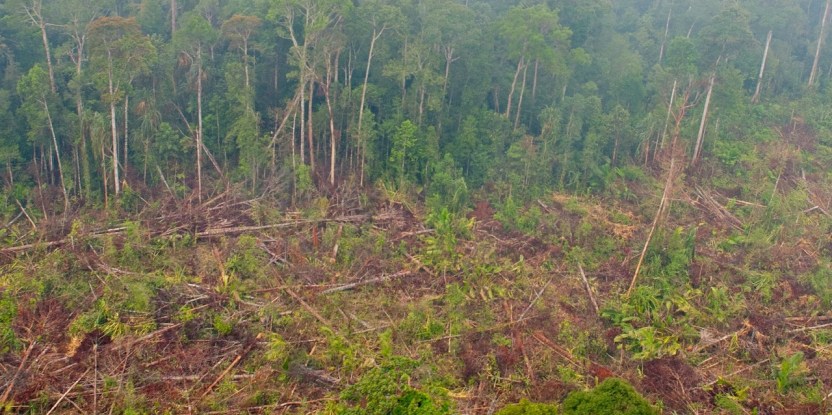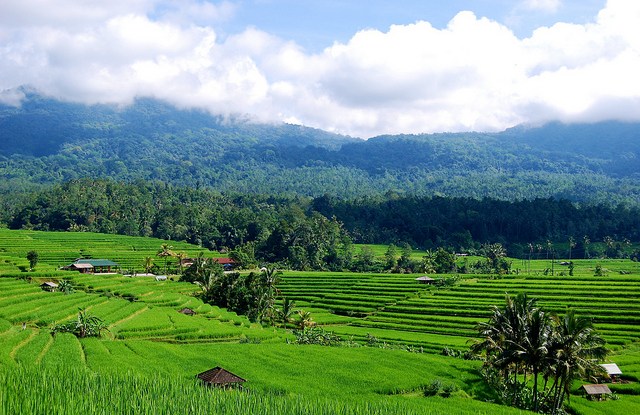The landscape approach is largely about working across institutional boundaries – boundaries that evolved for good reason but now sometimes hinder the integration needed to overcome imminent development and environment challenges on all geographic scales.
The most obvious boundary discussed in relation to landscape approaches is that between forestry and agriculture. Most agree that key aspirations such as reducing deforestation; implementing low-emission land use; enhancing ecosystem services for food production; ensuring appropriate and well-managed use of fire; and addressing rights and tenure issues cannot be realized to satisfaction if agriculture and forestry do not work together.
But there are other sector divides to bridge also. One of these exists between the private finance sector and the land-based sectors. As with other sector divides, the separate communities, areas of expertise, terminologies and institutions on all levels need to come together to develop innovative solutions. The emerging climate and development frameworks provide us with a strong rationale and momentum for this to happen.
FINANCE GAINING TRACTION
Interest in finance for development and environment has reached a new level of prominence. The Green Climate Fund is gearing up as the main vehicle for achieving the climate change objectives to be defined by the UNFCCC in Paris in December. The Standing Committee on Finance will look specifically at forest finance in 2015. The UN’s Third International Conference on Financing for Development in Addis Ababa, Ethiopia, in July will be the main intergovernmental attempt to confirm funding for achieving the Sustainable Development Goals ahead of the UN General Assembly in New York in September.
High-level conferences led by CIFOR and partners in the past two years have similarly elevated the topic of finance for investment in sustainable, low-carbon ventures in forestry and agriculture.
The Forests Asia Summit in Jakarta last May concluded that “government, the corporate sector and the finance sector must work together to create enabling conditions to unlock private capital and support investments in sustainable landscapes and smallholders.”
This was followed by a call at the Global Landscapes Forum in Lima in December to “scale up landscape finance by reducing risks for investment and transforming capital markets.”
Clearly, the move to connect large-scale capital with the needs of smallholders is gathering momentum. The trick will be to make this connection in ways that also lead to enhanced equity and sustainability outcomes – both global and local.
ENTER ‘THE LANDSCAPE FUND’
At CIFOR, we have identified financing sustainable landscapes as an emerging research priority and recently initiated a pilot project called The Landscape Fund, with initial funding from the Swedish International Development Cooperation (Sida). One entry point for us has been the evolution of REDD+ and the realization that actors in the private finance sector are not yet thrilled by the carbon market given the transaction costs and risks involved. At the same time, the search for green investment opportunities finds that the land-based sectors offer huge opportunities – provided viable financial products are available. It is also clear from research findings that smallholders and local communities see REDD+ as offering very promising prospects, albeit mainly as a complement to the core businesses that support their livelihoods.
So how can we connect these dots?
The Landscape Fund project sets out to investigate the following set of hypotheses:
- Large amounts of institutional capital are available to scale up investments in small- to medium-scale land use – provided investors are satisfied with the likely financial and sustainability returns.
- There are agricultural and forestry practices across all regions and ecological zones that could boost production and income to producers while also delivering key sustainability outcomes – but such practices are hampered by lack of access to fair, affordable and long-term capital to producers, a situation that tends to favor more short-sighted approaches.
- Financial risks can be well managed through portfolio approaches that are broader than in existing propositions; that is, approaches could have an international reach and include a wide range of products and production systems.
- Sustainability outcomes, including for climate regulation as well as social and equity dimensions, can be satisfactorily defined through a small number of standardized and measurable parameters across the entire portfolio. This makes it possible for progress on these outcomes to be monitored and verified in ways that keep transaction costs to a minimum.
- There is sufficient interest within the international public sector to provide resources for the necessary research, development, piloting, risk protection, and creation of measures to ensure rights and governance safeguards for developing the Landscape Fund concept.
In June, the Landscape Fund project, together with other initiatives, will be featured in the Global Landscapes Forum – The Investment Case, an event that CIFOR and its partners, including the World Bank, UNEP FI and the European Investment Bank among others, will convene 150-200 of the world’s leading experts from private, corporate, finance and other sectors in London on June 10. This event provides another opportunity for a wide range of finance actors to discuss the topic of private finance for sustainable development at the landscape level. Discussions will be guided in two sets of expert clusters and result in a 5-to-10-year road map for scaling up finance to sustainable forestry, agriculture and other land use sectors.
We aim to provide evidence that tests the above hypotheses, and also to engage the stakeholders across the finance-to-land-use spectrum in piloting new solutions. The landscape approach is fundamental for this to succeed.
Keep crossing those boundaries.
We want you to share Forests News content, which is licensed under Creative Commons Attribution-NonCommercial-ShareAlike 4.0 International (CC BY-NC-SA 4.0). This means you are free to redistribute our material for non-commercial purposes. All we ask is that you give Forests News appropriate credit and link to the original Forests News content, indicate if changes were made, and distribute your contributions under the same Creative Commons license. You must notify Forests News if you repost, reprint or reuse our materials by contacting forestsnews@cifor-icraf.org.


